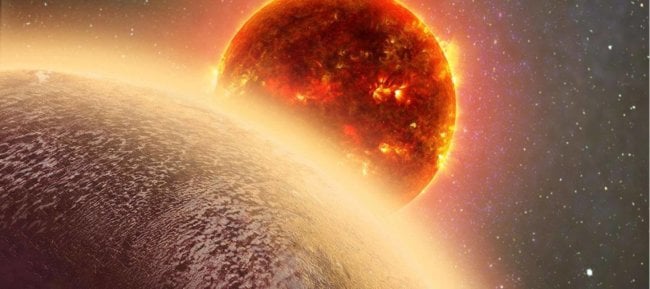
Space Agency NASA has continued daily scanning of our galaxy in search of new planets and systems are scattered in the vast expanses of outer space. Humanity has sent many probes into space, from “Voyagers” to “Juno”. And they all perform a common task – the exploration of the Solar system and what lies beyond.
Perhaps the most effective tool to search for exoplanets at the moment, is a space Observatory “Kepler”. You probably have already noted that most of the discovered worlds are called that in his honor.
Although every year we are finding lots of exoplanets, most of these worlds represent the lifeless boulders, located at a distant and unexplored stars. But, it turns out, even some of them are so unusual that even the most hardened of astrophysicists sometimes make you scratch your head. We offer you to familiarize yourself with the ten most effective. Not the heads, and exoplanets, of course.
The ice ball. Planet OGLE-2016-BLG-1195Lb
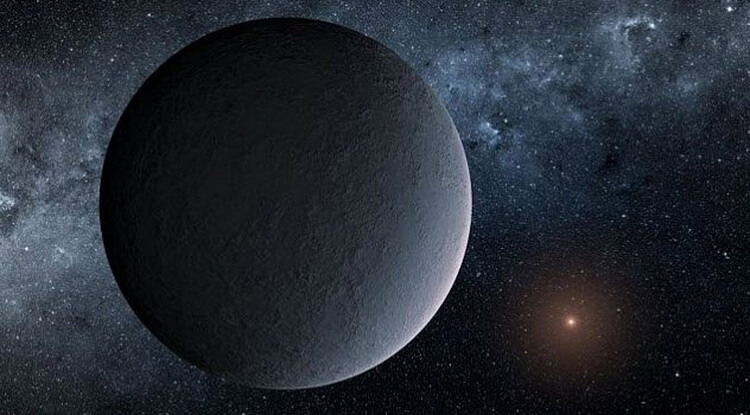
OGLE-2016-BLG-1195Lb is an ice planet located 13,000 light years from the Solar system. The temperature on its surface can vary from -220 to -186 degrees Celsius, why it is often called “ice ball”.
A light year is a relative measure of the distance that need to be overcome, if we move at the speed of light during the whole year. The speed of light, in turn, is approximately equal to 300 000 kilometers per second, or more than one billion kilometers per hour. In other words, if we want to look at this ice ball personally, we have to fly to it very long and at very high speed.
Currently, the fastest known man-made objects in space is space probe New horizons, sent to study the planet Pluto, its moons and Kuiper Belt objects in 2006. Its speed is just over 58,000 kilometers per hour, far below the speed of light. It’s the fact that we have no technology that would allow you to visit the nearest system, even if it is at a distance of several light years. So we use the technology of long-distance observation, to discover and to determine some characteristics of distant exoplanets and their atmospheres. The same OGLE-2016-BLG-1195Lb was discovered using the microlensing – when the planet passed the star was observed a short decrease its brightness.
Scientists believe that the ice of the planet OGLE-2016-BLG-1195Lb consists of water. Definitely great news, but we are unlikely in the near future will be able to use this water. To guess, of course, can be infinite, but who knows, maybe this planet as a source of fresh water and can use highly advanced technological alien civilizations.
Hell in the flesh. Planet KELT-9b
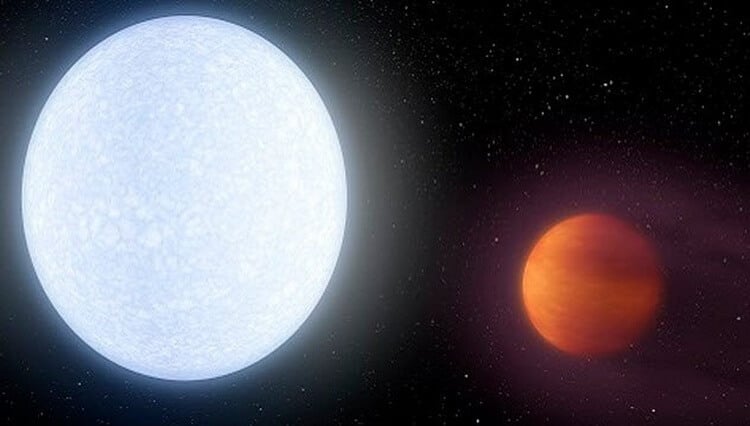
KELT-9b is the hottest exoplanet ever discovered. It is so hot that it literally kills herself, burning their mass. It is 650 light years from us and is constantly rotated by one side to its star.
Being a gas giant about three times bigger than our own Jupiter, and the temperature on its surface is 4315 degrees Celsius. This is more than most well-known us stars, and almost as hot as the surface of our Sun, which burns at a temperature of 5505 degrees Celsius.
In a few million years, KELT-9b is completely burnt out, and then completely disappear, leaving only a lonely star around it.
The world of water. The planet GJ 1214b
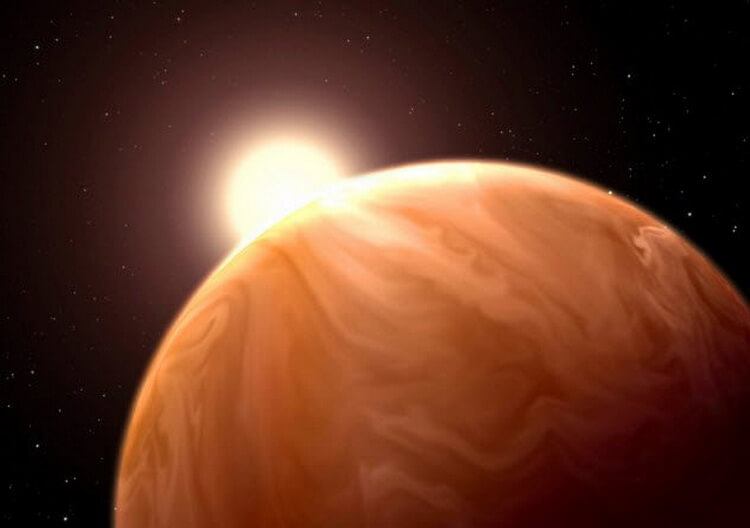
Planet GJ 1214b is a huge “water world”, three times the size of our Earth, and located about 42 light years from our Solar system. All have on Earth water accounts for only 0.05 percent of the mass of our planet, while water GJ 1214b so much that its mass is 10 percent of the total mass of the planet.
Scientists suggest that GJ 1214b has oceans, whose depths can reach up to 1,600 kilometers. For comparison, the deepest point on Earth, Mariana trench, goes down just 11 miles.
We explored only about 5 percent of our oceans and has already managed to discover countless living beings, whose existence was not even suspected. Just imagine how much deep-sea horror can lurk beneath the waves GJ 1214b!
Planet PSR J1719-1438 b. Best friend girls
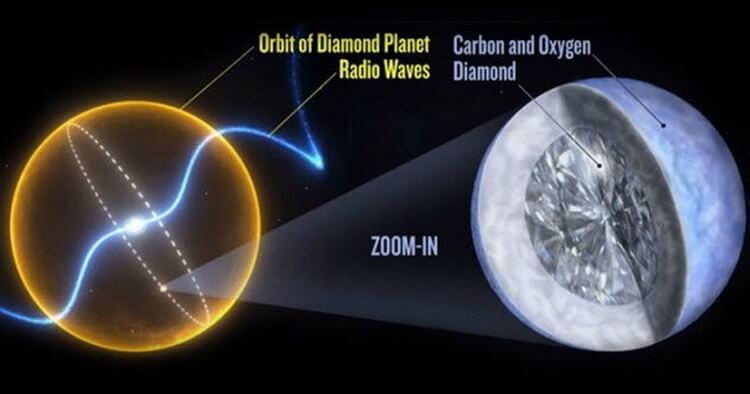
Planet PSR J1719-1438 b is a giant pure diamond. In the truest sense of the word. The diameter of a carbon planet is about five times greater than the diameter of the Earth. It is located 4,000 light years from the Solar system. Because of the very powerful forces of gravity and of pressure, the planet turned into one giant diamond.
This exoplanet orbits around a millisecond pulsar PSR J1719-1438. Astronomers think that the pulsar once upon a time was very massive star, which later faded, and then went supernova. Very rare millisecond pulsars are formed presumably due to absorption of matter from which the companion star. That is, before this system was also dual.
In this case, the companion star was most likely made by a white dwarf that our Sun too will one day become. White dwarfs, recall, are former massive stars that have exhausted their hydrogen and are unable to sustain thermonuclear reactions in their cores.
Millisecond pulsar may “eat” all matter in the white dwarf, leaving that only about 0.1 of the mass. The result is a white dwarf turned into a truly exotic companion to a pulsar – a diamond planet.
Planet Kepler-16b. A Real Tatooine
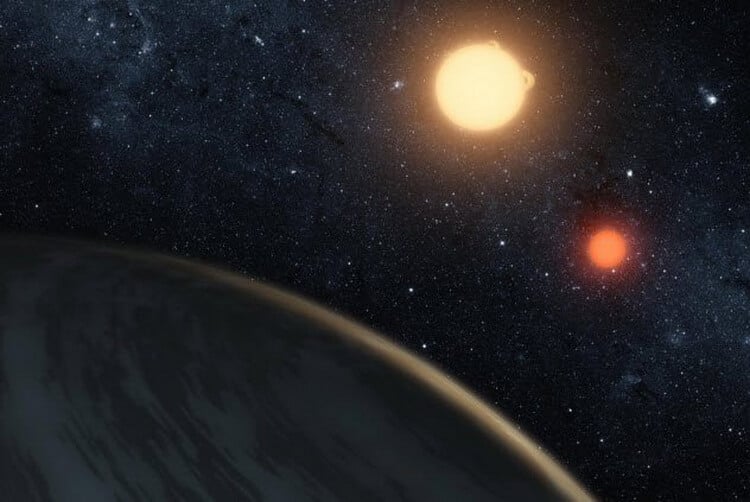
Planet Kepler-16b in fact represents the real counterpart of the planet Tatooine from kynoselen “Star wars”. Such a title she was given largely because Kepler-16b is one of the few discovered exoplanets orbiting binary system stars.
The mass of Kepler-16b is about 105 times larger than the earth, while its radius is 8.5 times more than our planet. The atmosphere of this world largely consists of hydrogen, methane and a small amount of helium. Being approximately 200 light years away, Kepler-16b makes a complete revolution around its two stars every 627 of our earthly days.
Despite the fact that the planet looks like Tatooine, Kepler-16b, unlike the latter, unable to support life. Suppose even droids there could be found.
Planet Kepler-10b. Scorched world
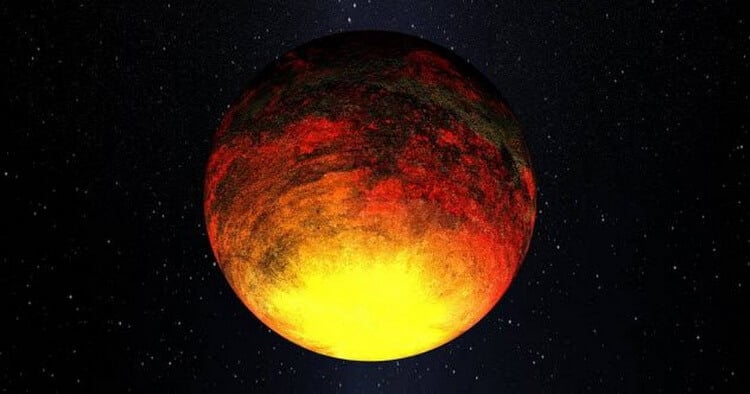
Planet Kepler-10b is the smallest among the detected exoplanets, and scientists believe that its surface is covered with entire oceans of molten lava. Located about 560 light years from Earth, Kepler-10b was the first rocky planet discovered outside our Solar system, in fact, giving humankind the opportunity to take the first step towards future space exploration.
The surface temperature of Kepler-10b is heated to 1400 degrees Celsius. As a result, the breed literally melts, filling a vast area and forming a true oceans of molten lava. The planet has a very high structural density, so there is an assumption that Kepler-10b contains large amounts of iron, which adds hot lava brighter shade of red.
Dark planet. TrES-2b
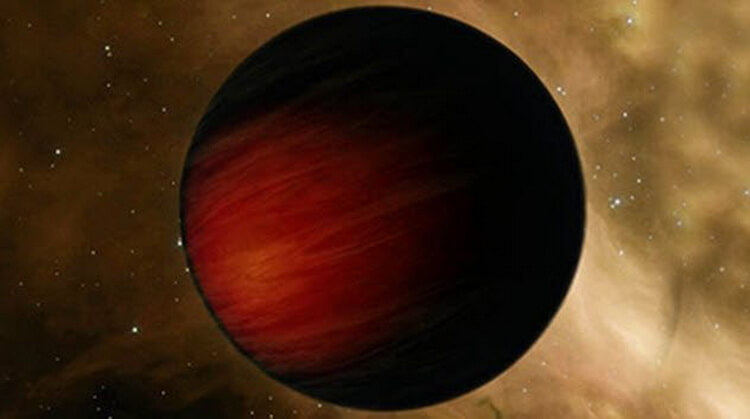
TrES-2b is the darkest ever discovered exoplanets, as it reflects less than 1 percent of the starlight that reaches it. This makes it blacker than coal or black acrylic paint. Actually a miracle that we found this planet, as she hides in the darkness of space pohlesche any ninja. By the way, this question arises: how many exoplanets we may have missed, if there is such as TrES-2b?
Our own hero is about 750 light years from the Solar system. Its atmosphere is composed of vaporized sodium, potassium and titanium oxide. According to astronomers, that’s why planet reflects so little light, however, the final answer to the riddle of why the planet is so dark, still not found and perhaps never will be. Who knows, maybe on TrES-2b is living some sort of intelligent civilization, but we’ll never know. It is very dark planet.
HD 189733b. A planet with a rain of glass
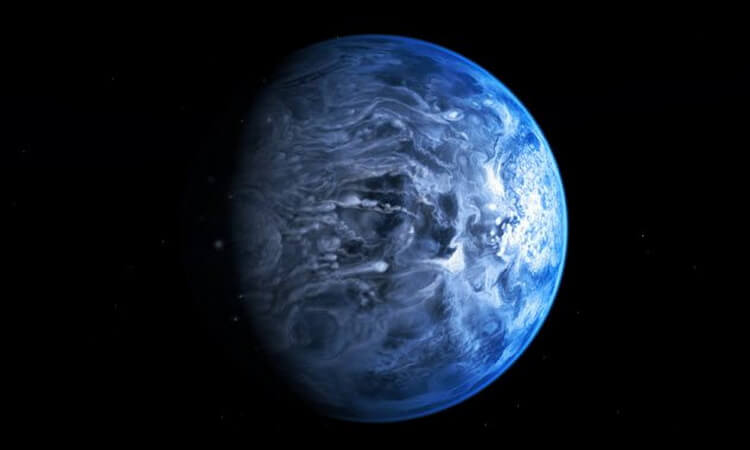
Perhaps one of the most interesting exoplanets in this list is HD 189733b, located 63 light years from us. The fact that it rains. The rain of glass. Sideways. You read that correctly. Wind this hellish exoplanet can reach 8700 kilometers per hour, so produce a concentrated atmosphere of silicon dioxide particles falling from the hot glass, not managing to fall to the surface, looking horizontally in different directions, cutting everything in its path, and then still descend to the surface.
Just imagine being stuck on a planet in a storm!
Cancer 55 e. A planet with a strange water
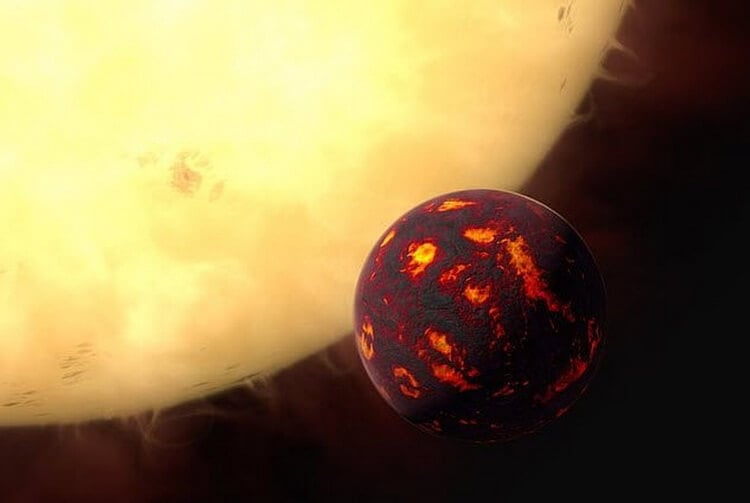
Planet Cancer 55 e is in the tidal capture, therefore, one of its sides always turned to the native star. Because of this water on its surface may be in a supercritical state is simultaneously a liquid and a gas. The planet itself is about 25 times closer to the star than mercury is to our Sun, and completes one revolution around its sun every 18 hours. It is very fast.
Weight 55 Cancer e is approximately 7.8 times larger than the earth, and its radius is approximately 2 times larger than our planet.
CoRoT-7b. Planet stone snow
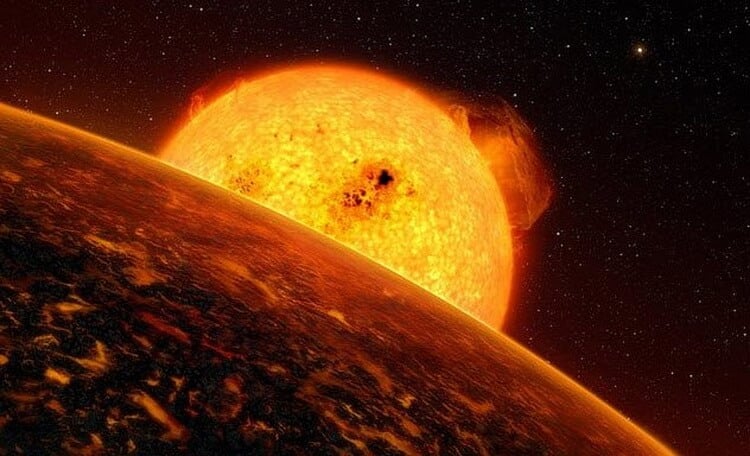
CoRoT-7b is a really bizarre planet, because it is snowing out of stones!
Like many other exoplanets, CoRoT-7b is the tidal capture of its star. The surface temperature of the side facing the star, is 2200 degrees Celsius, at the same time on the side that is turned away from a star, average temperature, as a rule, is -210 degrees Celsius.
Lava on the illuminated side is heated so that as a result evaporated like water on our planet. This creates massive stone clouds after congenerous on the relatively cooler side and resulting fall to the surface in the form of huge boulders. If we were able to withstand extreme temperatures on this planet, the sight would open up, and really, very entertaining.
10 most amazing exoplanets discovered
Nikolai Khizhnyak